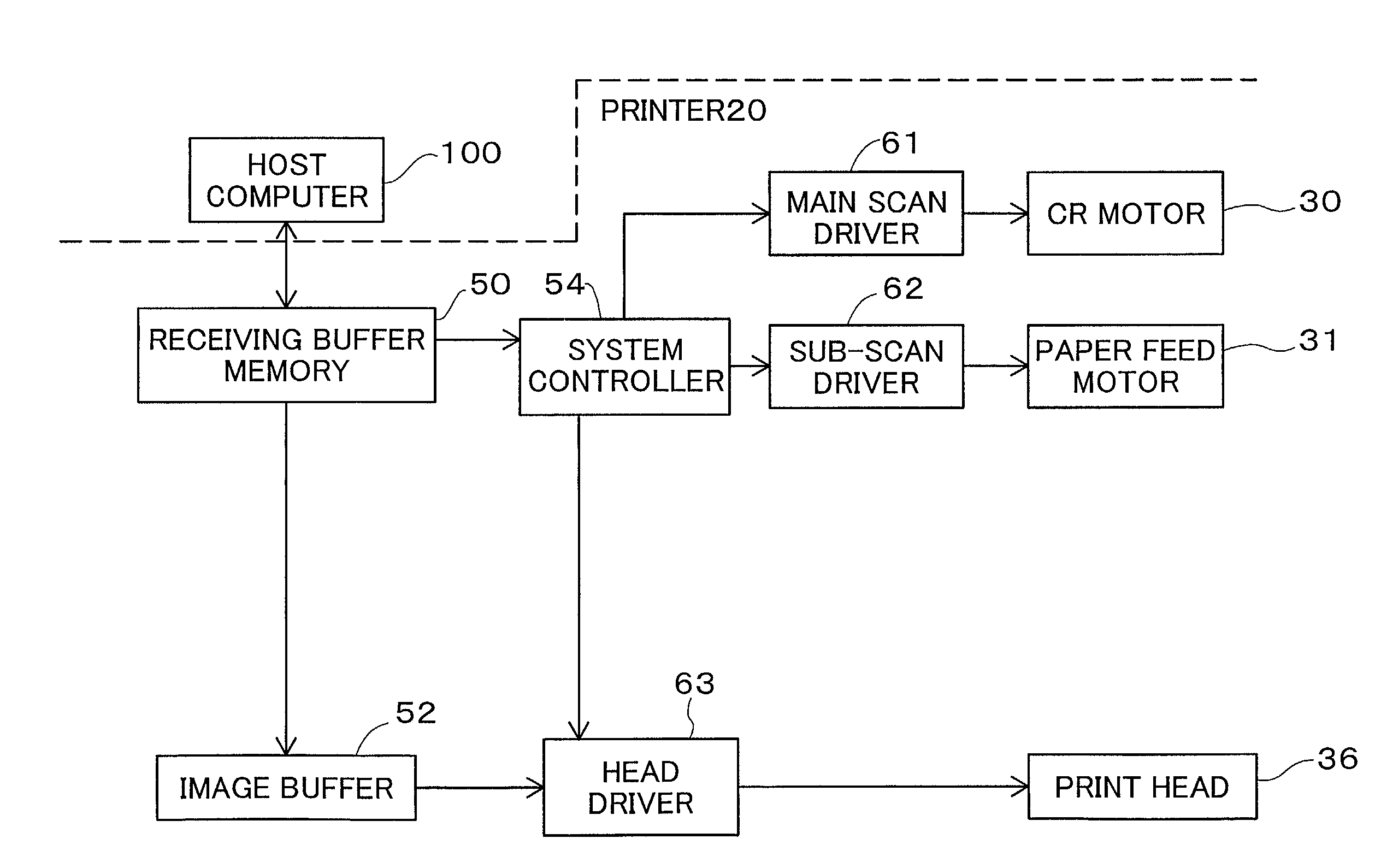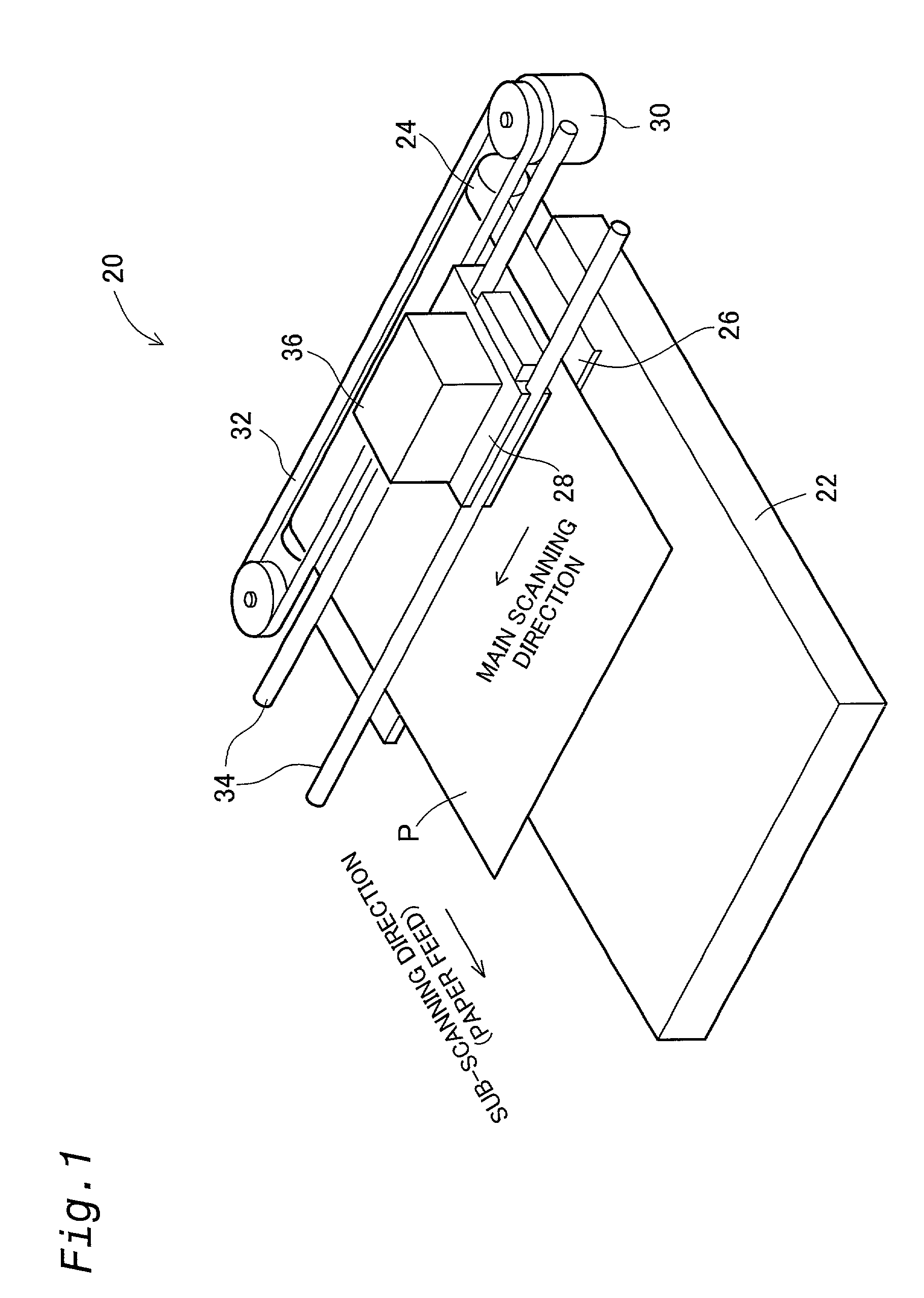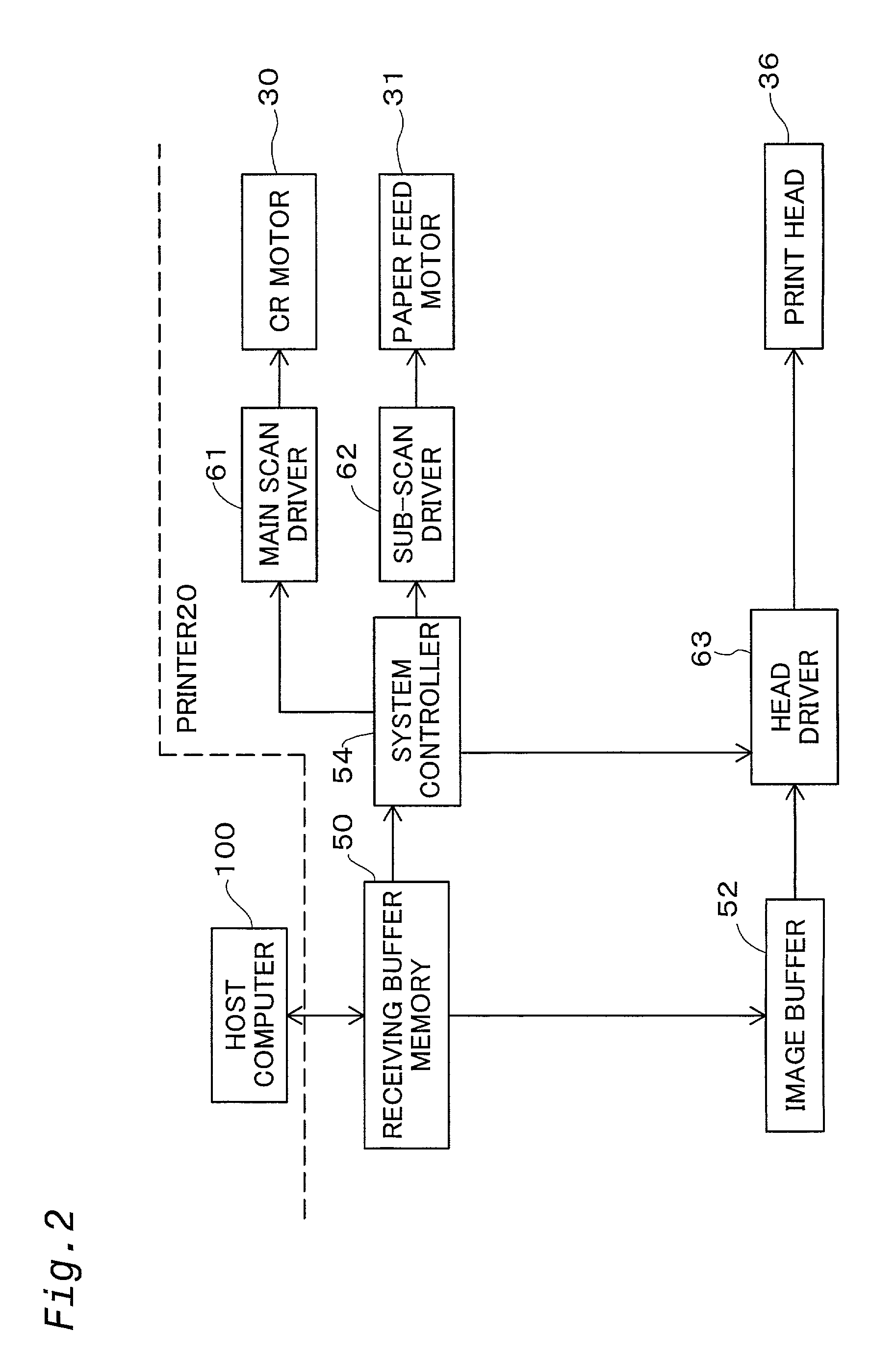Settings of sub-scan feed error and sub-scan feed amount suitable for printing medium
a technology of sub-scan feed and sub-scan amount, which is applied in the field of printing technology, can solve the problems that the accuracy of paper feed according to printing media types has not been taken into account, and achieve the effect of improving image quality
- Summary
- Abstract
- Description
- Claims
- Application Information
AI Technical Summary
Benefits of technology
Problems solved by technology
Method used
Image
Examples
first embodiment
C. Setting of feed precision in the
[0056]FIG. 7 is an explanatory diagram showing an user interface of a printer driver displayed on a screen of the host computer 100 (FIG. 2). User can select one printing medium to be actually used from plural types of printing media (also referred to as “printing paper”) designed to be used in this printer 20. The term “plural types of printing media designed to be used in this printer 20” indicates commercially available printing media dedicated for this printer 20.
[0057]FIGS. 8A and 8B are explanatory diagrams showing first example of setting feed errors δ with respect to three types of printing media. FIG. 8A illustrates variance of feed errors δ with respect to three types of printing media, i.e, plain paper, glossy film, and photographic paper. The feed error varies for every sub-scan, but its average is approximately constant. In other words, the average feed error δave is about 15 μm for plain paper, about 8 μm for glossy film, and about 0 ...
second embodiment
D. Feed amount correction in the
[0065]FIGS. 10A and 10B are explanatory diagrams showing feed error δ with respect to three types of printing media used in a comparative example. FIG. 10A illustrates variation of feed errorδ with respect to plain paper, glossy film, and photographic paper. The average feed error δave is about0 μm for plain paper, about −8 μm for glossy film, and about −15 μm for photographic paper. FIG. 10B shows accumulated feed errors Σδ with respect to these printing media.
[0066]In the example shown in FIG. 10A, the sub-scan feed mechanism is adjusted so that among the plural types of printing media designed to be used in the printer 20, average feed error δave of the most unslippery plain paper becomes approximately 0. Moreover, average feed error δave of the other printing media is negative. As for photographic paper, its average feed error δave is a considerably large negative value, which may cause dark banding and degradation of image quality.
[0067]FIGS. 11A...
modification 1
E1. Modification 1
[0078]In the above embodiments, printers that perform “constant feeding” where a constant value is used as sub-scan feed amount is described, but the present invention can also be adopted to printers that perform “variable feeding” where a plurality of different values are used as sub-scan feed amount.
PUM
 Login to View More
Login to View More Abstract
Description
Claims
Application Information
 Login to View More
Login to View More - R&D
- Intellectual Property
- Life Sciences
- Materials
- Tech Scout
- Unparalleled Data Quality
- Higher Quality Content
- 60% Fewer Hallucinations
Browse by: Latest US Patents, China's latest patents, Technical Efficacy Thesaurus, Application Domain, Technology Topic, Popular Technical Reports.
© 2025 PatSnap. All rights reserved.Legal|Privacy policy|Modern Slavery Act Transparency Statement|Sitemap|About US| Contact US: help@patsnap.com



